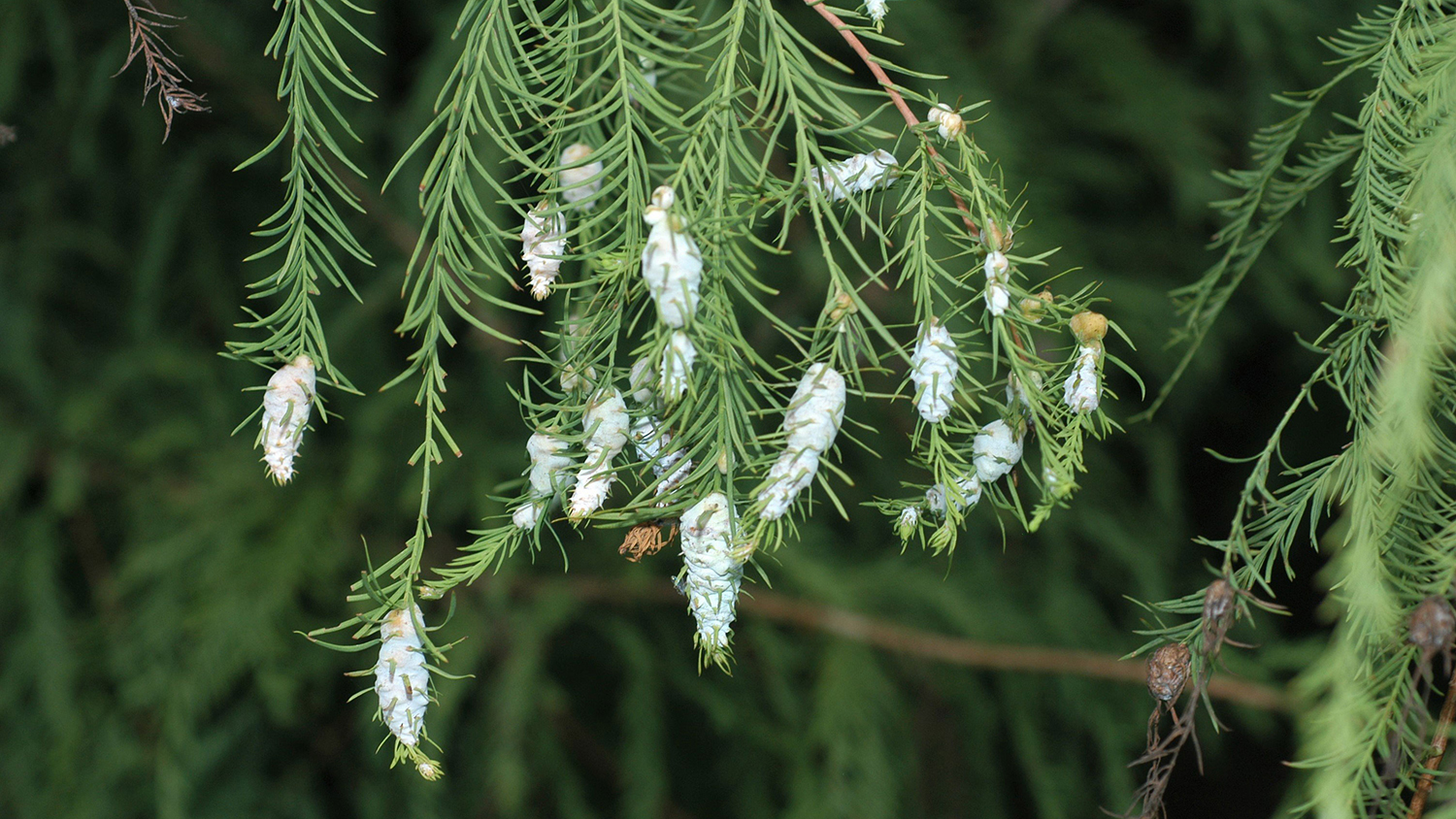Cypress Twig Gall Midge, Vol. 4, No. 29
Related News
June 23, 1997
May 12, 1997
March 17, 1997

Order: Diptera
Family: Ceciodomyiidae
Those are not cones on this cypress twig; they are galls caused by the larvae of a tiny fly, the cypress twig gall midge. There are a lot of species of gall midges and most are quite host specific. Cypress twig gall midge only occur on bald cypress and pond cypress. The flies lay their eggs on young developing twigs and the developing larvae induce gall formation. The galls have a spongy texture and a single gall can contain a dozen or more larvae, depending on the size of the gall. Galls turn brown with age, eventually dropping from the tree as needles are shed. Pupation takes place inside the galls and adults may emerge from galls that are still on the tree to complete a second generation later in the season, or mature larvae may overwinter inside fallen galls to pupate and emerge as adults the following spring.
Not only are gall insects very host specific, but each species of gall causes a unique type/shape of gall. Another midge belonging to the same genus as the cypress twig gall midge causes galls that are shaped much like small white flowers. Appropriately, this one is known as cypress flower gall midge.
Yes, the galls are unsightly, especially when they have turned brown, or when there are so many they cause branches to droop, but insecticide treatment is not recommended because the galls do not really harm the tree and there is no good, practical treatment for controlling them. Fortunately, there are several parasitic insects that attack twig gall midge and help keep their populations in check. Outbreaks are somewhat sporadic and a tree that was heavily infested with galls one year may have only a few galls in subsequent years. This photo was taken a few years ago when this tree was heavily infested, but few galls are present on this tree this year.
Blake Layton, Extension Entomology Specialist, Mississippi State University Extension Service.
The information given here is for educational purposes only. Always read and follow current label directions. Specific commercial products are mentioned as examples only and reference to specific products or trade names is made with the understanding that no discrimination is intended to other products that may also be suitable and appropriately labeled.